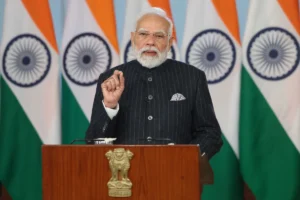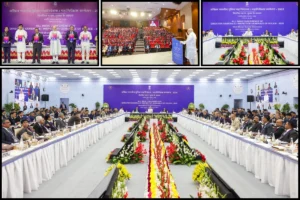
Nobel Prize to Alain Aspect, John Clauser and Anton Zeilinger
Quantum Physics : A cat in a box may be alive or dead, but certainly not both. When we get down to the smallest scales, quantum physics tells us the basic expectations don’t in fact reflect reality. It may seem startling, yet manages to explain the physical world better than any other theory. The most recent validation of quantum mechanics came in the awarding of the Nobel Prize to Alain Aspect, John Clauser and Anton Zeilinger whose experiments verified quantum entanglement.
Alain Aspect, John Clauser and Anton Zeilinger have each conducted groundbreaking experiments using entangled quantum states, where two particles behave like a single unit even when they are separated. Their results have cleared the way for new technology based upon quantum information.
The ineffable effects of quantum mechanics are starting to find applications. There is now a large field of research that includes quantum computers, quantum networks and secure quantum encrypted communication. One key factor in this development is how quantum mechanics allows two or more particles to exist in what is called an entangled state.
What happens to one of the particles in an entangled pair determines what happens to the other particle, even if they are far apart. For a long time, the question was whether the correlation was because the particles in an entangled pair contained hidden variables, instructions that tell them which result they should give in an experiment.
Run-through of research
In the 1960s, John Stewart Bell developed the mathematical inequality that is named after him. This states that if there are hidden variables, the correlation between the results of a large number of measurements will never exceed a certain value. However, quantum mechanics predicts that a certain type of experiment will violate Bell’s inequality, thus resulting in a stronger correlation than would otherwise be possible.
John Clauser developed John Bell’s ideas, leading to a practical experiment. When he took the measurements, they supported quantum mechanics by clearly violating a Bell inequality. This means that quantum mechanics cannot be replaced by a theory that uses hidden variables. Some loopholes remained after John Clauser’s experiment.
Alain Aspect developed the setup, using it in a way that closed an important loophole. He was able to switch the measurement settings after an entangled pair had left its source, so the setting that existed when they were emitted could not affect the result. Using refined tools and long series of experiments, Anton Zeilinger started to use entangled quantum states. Among other things, his research group has demonstrated a phenomenon called quantum teleportation, which makes it possible to move a quantum state from one particle to one at a distance. “It has become increasingly clear that a new kind of quantum technology is emerging.
Also read: Process of Star Creation In real Time : Research
We can see that the laureates’ work with entangled states is of great importance, even beyond the fundamental questions about the interpretation of quantum mechanics,” says Anders Irbäck, Chair of the Nobel Committee for Physics.
Also read : Twitter New Feature “Live Tweeting” First Episode: Hunter Biden Story
To read more such news, download Bharat Express news apps


















